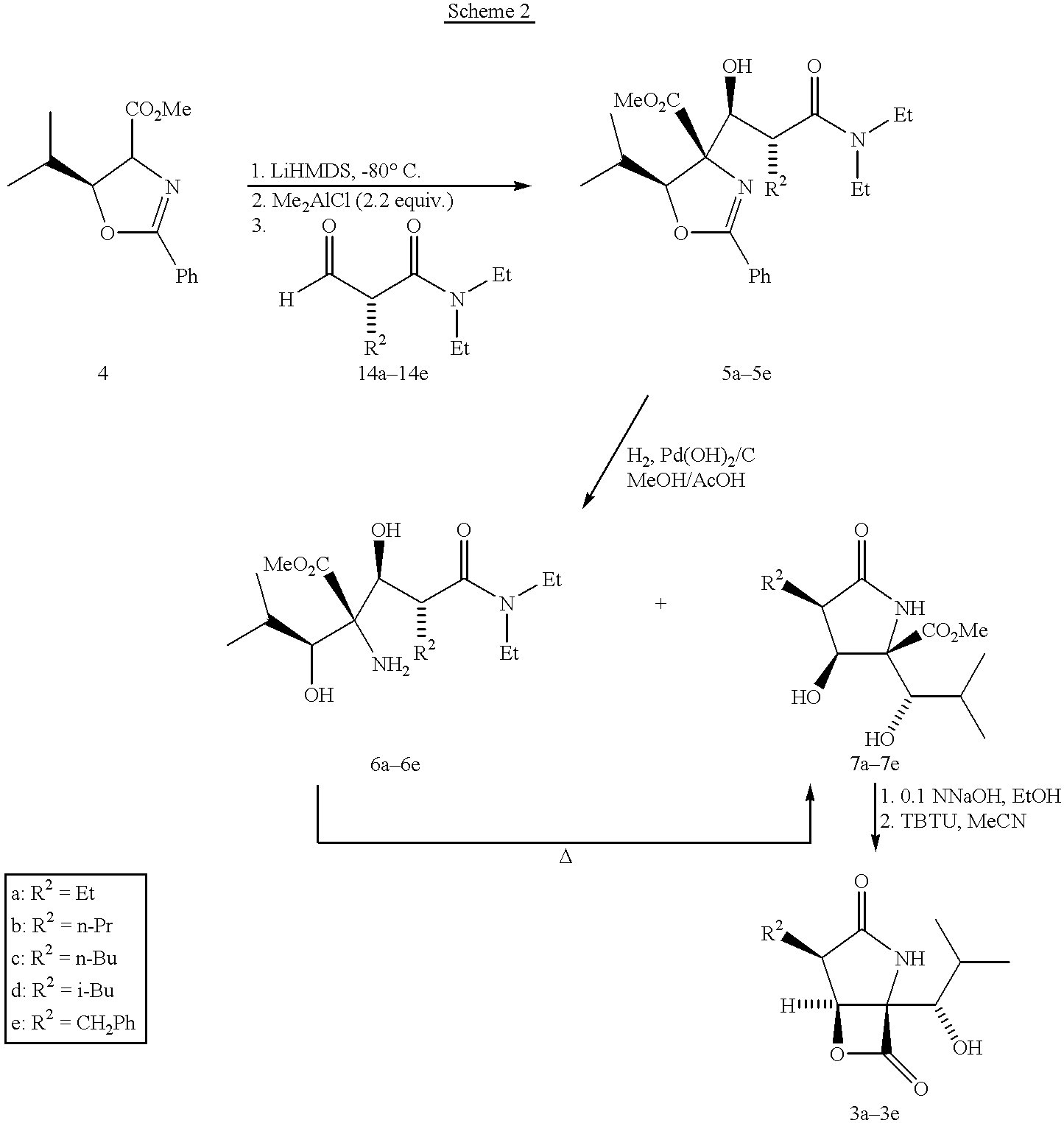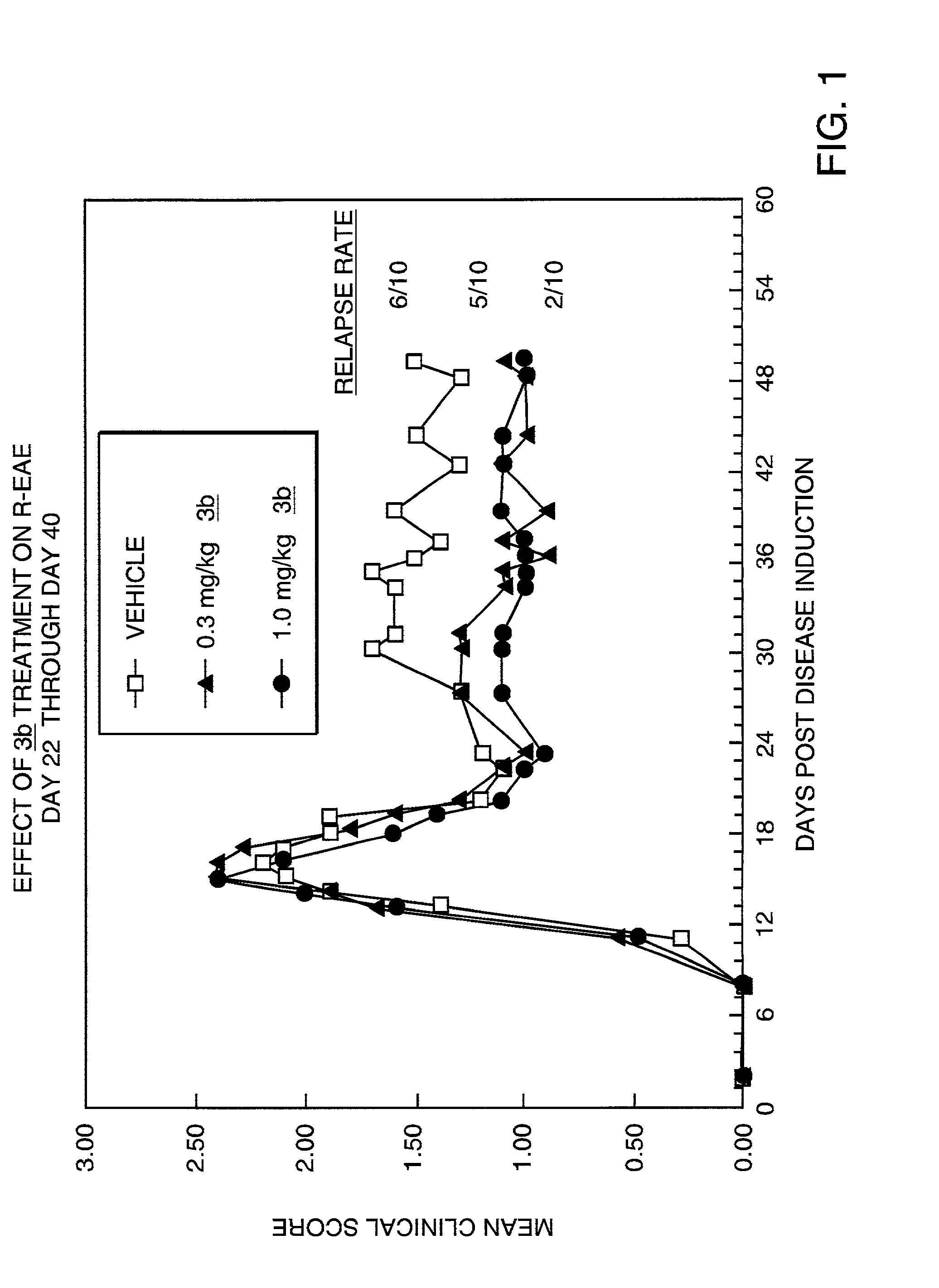Treatment of inflammatory and autoimmune diseases
a technology for autoimmune diseases and inflammatory diseases, applied in the field of inflammatory and autoimmune diseases, can solve problems such as untoward side effects, term steroid use, and disability, and achieve the effects of reducing the risk of side effects, and improving the quality of li
- Summary
- Abstract
- Description
- Claims
- Application Information
AI Technical Summary
Benefits of technology
Problems solved by technology
Method used
Image
Examples
example 1
Relapsing-Remitting Experimental Autoimmune Encephalomyelitis
[0101] Materials and Methods
[0102] Mice. Female SJL / J mice, 6 weeks old, were purchased from Harlan Laboratories (Indianapolis, Ind.), housed in the Northwestern animal care facility, and maintained on standard laboratory food and water ad libitum. Paralyzed mice were afforded easier access to food and water.
[0103] Peptides. PLP139-151 (HSLGKWLGHPDKF) was purchased from Peptides International (Louisville, Ky.). Amino acid composition was verified by mass spectrometry and purity (>98%) was assessed by HPLC.
[0104] Induction of R-EAE. Mice were immunized by subcutaneous injection of PLP139-151 in complete Freund's adjuvant (CFA) as previously described (McRae, et al. J. Neuroimmunol. (1992) 38:229). Each mouse received 50 .mu.g of PLP139-151 distributed over 2 sites on each hind flank.
[0105] Drug Treatment. Starting on day 22, animals (10 per group) were dosed once daily i.p. (5 mL / kg) with vehicle or with 3b (0.3 or 1.0 mg / k...
example 2
Effect of Treatment With 3b on Allergen-Induced Pulmonary Leukocyte Accumulation in Actively Sensitized Brown Norway Rats
[0110] Materials and Methods
[0111] Rats. Male Brown Norway rats were supplied by Harlan Olac Limited (Bicester, Oxon, UK) and delivered within the weight range of 180-200 g. Following acclimatization for at least five days, animals were actively sensitized over a 3-week period and were within the weight range 250-300 g at the time of allergen exposure. Food and water were provided ad libitum.
[0112] Sensitization. Ovalbumin (OA; 10 .mu.g) mixed with aluminum hydroxide gel (10 mg) will be injected (0.5 mL, i.p.) into Brown Norway rats and repeated 7 and 14 days later.
[0113] Drug Treatment. On day 21, sensitized rats were anaesthetized (halothane 5% in O.sub.2) and 3b, dexamethasone, or vehicle (lactose) was instilled via a cannula placed directly into the trachea at 1 hour prior to OA exposure. This procedure was repeated at 24 hours and 48 hours after OA exposure.
[...
example 3
Effect of Treatment with a Combination of 3b and Budesonide on Allergen-Induced Pulmonary Leukocyte Accumulation in Actively Sensitized Brown Norway Rats
[0120] Materials and Methods
[0121] Rats. Male Brown Norway rats were supplied by Harlan Olac Limited (Bicester, Oxon, UK) and delivered within the weight range of 180-200 g. Following acclimatization for at least five days, animals were actively sensitized over a 3-week period and were within the weight range 250-300 g at the time of allergen exposure. Food and water were provided ad libitum.
[0122] Sensitization. Ovalbumin (OA; 10 .mu.g) mixed with aluminum hydroxide gel (10 mg) will be injected (0.5 mL, i.p.) into Brown Norway rats and repeated 7 and 14 days later.
[0123] Drug Treatment. On day 21, sensitized rats were anaesthetized (halothane 5% in O.sub.2) and treated intratracheally (i.t.) 1 hour prior to OA exposure with vehicle (group V; lactose, 1 mg), budesonide (group C, 0.1 mg / kg; group F, 0.5 mg / kg), 3b (group A, 0.03 mg / k...
PUM
| Property | Measurement | Unit |
|---|---|---|
| body weight | aaaaa | aaaaa |
| weight | aaaaa | aaaaa |
| weight | aaaaa | aaaaa |
Abstract
Description
Claims
Application Information
 Login to View More
Login to View More - R&D
- Intellectual Property
- Life Sciences
- Materials
- Tech Scout
- Unparalleled Data Quality
- Higher Quality Content
- 60% Fewer Hallucinations
Browse by: Latest US Patents, China's latest patents, Technical Efficacy Thesaurus, Application Domain, Technology Topic, Popular Technical Reports.
© 2025 PatSnap. All rights reserved.Legal|Privacy policy|Modern Slavery Act Transparency Statement|Sitemap|About US| Contact US: help@patsnap.com



